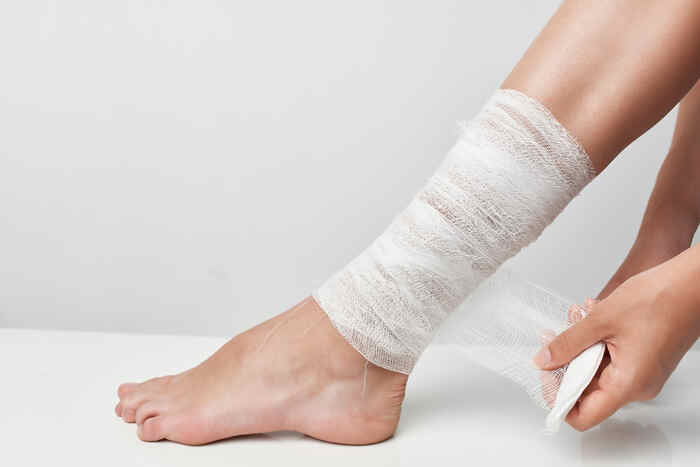
Feel better faster. Get care today.
From the clinic or your couch. Find high quality, same-day urgent care for you and your kids. Book an urgent care visit today.

Burn injuries, even minor burns, can be both physically and emotionally challenging, and understanding the healing process is crucial for recovery. This article delves into the various stages of burn healing, outlining what to expect as the body works to repair itself. From the initial inflammatory response to the regeneration of skin and tissue, we will explore each phase in detail, including the typical timeline and the factors that can influence healing. Additionally, you’ll find care strategies and treatments that can help you or your loved one in recovery.
Burns are classified into three main types based on their severity and the layers of skin affected. First-degree burns are the mildest, affecting only the outer layer of skin (epidermis) and causing redness and minor pain without blisters. Second-degree burns penetrate deeper, damaging both the epidermis and the underlying layer (dermis), often resulting in blisters, swelling, and more intense pain. Third-degree burns are the most severe, extending through all layers of the skin and potentially affecting underlying tissues, leading to charred or white burned skin that may require medical interventions such as skin grafts for proper healing. Common causes of burns include exposure to flames, chemicals, or scald injuries from hot liquids, all of which can vary significantly in their impact on the skin and overall recovery process.

From the clinic or your couch. Find high quality, same-day urgent care for you and your kids. Book an urgent care visit today.
The inflammatory phase is the body's immediate response to a burn injury and plays a critical role in the healing process of burned skin, according to the National Institute of Health (NIH). They explain that this phase typically begins right after the injury occurs and can last for several days. During this time, the body initiates a complex series of biological responses aimed at preventing infection, promoting healing, and preparing the tissue for subsequent repair.
During the inflammatory phase, the NIH notes that the body responds to the burn by releasing various signaling molecules, such as cytokines and growth factors. These substances increase blood flow to the affected area, causing redness and swelling, which are hallmark signs of inflammation. White blood cells, including neutrophils and macrophages, migrate to the site of injury to combat any potential infections and begin the process of cleaning up damaged tissue. This immune response is essential, as it not only helps to prevent infection but also lays the groundwork for the next phase of healing. Pain and sensitivity in the area are also common during this stage, serving as a protective mechanism to discourage further injury.
As the inflammatory phase progresses, the body begins to stabilize the burn area. The formation of a protective barrier, often in the form of a scab or blister, helps to shield the underlying tissues from external contaminants. This phase is crucial for setting the stage for tissue regeneration, as it ensures that the damaged area is adequately prepared for the subsequent healing stages.
The proliferative phase marks a significant turning point in the burn healing process, as the body actively works to rebuild and repair the damaged tissue. This phase typically begins a few days after the injury and can last for several weeks, depending on the severity of the burn. During this time, the focus shifts from inflammation to regeneration, with the formation of new tissue and blood vessels playing a central role in the healing journey.
In the proliferative phase, the NIH lists several key processes occur simultaneously. Fibroblasts, a type of connective tissue cell, migrate to the injury site and produce collagen, which is essential for providing structure and strength to the new tissue. Angiogenesis, the formation of new blood vessels, also takes place, ensuring that the healing tissue receives the necessary nutrients and oxygen. Additionally, epithelial cells begin to cover the wound, creating a new layer of skin. This phase is characterized by the gradual reduction of swelling and redness as the body works to restore the integrity of the skin. Though the area may still appear pink and tender, this is a sign of healthy healing as the body continues to lay down new tissue and promote recovery.
The remodeling phase is the final stage of the burn healing process, where the body fine-tunes and strengthens the newly formed tissue, according to the NIH. This phase can last for months to years, depending on the severity of the burn and individual healing factors. During this time, the focus shifts from the initial repair to the reorganization and maturation of collagen fibers, which helps restore the skin's strength and elasticity.
During the remodeling phase, the collagen that was laid down during the proliferative phase undergoes significant changes. Initially, the collagen fibers are organized in a haphazard manner, but over time, they become more aligned and organized, improving the tensile strength of the tissue. The skin may also gradually regain its color and texture, although it may not return to its original state. Some individuals may experience changes such as scarring or thickening of the skin, particularly if the burn is deep. This phase is crucial for achieving optimal functional and aesthetic outcomes, and rehabilitation strategies, including physical therapy and scar management techniques, can play a vital role in enhancing recovery during this period.
The healing process of burn wounds can be influenced by various factors that can either facilitate or hinder recovery. Understanding these key factors is essential for optimizing treatment and improving outcomes:
Age: Age can significantly impact the healing process, with younger individuals typically experiencing faster recovery due to more robust regenerative capabilities. Conversely, older adults may face slower healing times and increased risks of complications due to factors like reduced skin elasticity, underlying health conditions, and decreased immune function.
Overall Health: The general health of an individual plays a crucial role in the healing of burn wounds. Conditions such as diabetes, obesity, or cardiovascular disease can impair circulation and immune response, leading to delayed healing and a higher risk of infection. Maintaining good overall health through proper nutrition and management of chronic conditions can enhance the body’s ability to heal.
Size and Location of the Wound: The size and location of a burn wound are critical factors affecting healing. Larger burns, or those located in areas with less blood supply, such as the extremities, may take longer to heal and are more prone to complications. Additionally, burns on joints can lead to functional limitations and require more intensive rehabilitation efforts to restore mobility.
Scarring can affect not only the aesthetic aspect of the skin but also its functionality, making it crucial to adopt strategies that support recovery and improve skin health. The NIH lists several practical tips for managing burn scars to enhance healing and reduce their long-term impact:
Gently Manage the Scar: It’s important to handle the scar tissue gently to avoid irritation and further damage. This can include using silicone gel sheets or ointments, which can help flatten and soften the scar. Regularly massaging the scarred area with a suitable moisturizer can also promote circulation and improve the texture of the skin.
Use Sun Protection: Protecting the scar from sun exposure is vital, as UV rays can darken scars and make them more noticeable. Applying a broad-spectrum sunscreen with a high SPF on the affected area, even after the scar has healed, can help prevent discoloration and promote more even skin tone.
In Some Cases, Physical Therapy May Be Needed: For burns that result in significant scarring or restrict movement, physical therapy may be necessary. A physical therapist can provide exercises and techniques to improve flexibility, reduce tightness, and enhance overall function, helping individuals regain mobility and reduce the risk of long-term complications associated with burn scars.
Find the urgent care you need quickly and easily—visit Solv today to locate top-rated facilities near you!
Burns are classified into three main types based on their severity and the layers of skin affected. First-degree burns are the mildest, affecting only the outer layer of skin and causing redness and minor pain without blisters. Second-degree burns penetrate deeper, damaging both the outer layer and the underlying layer of skin, often resulting in blisters, swelling, and more intense pain. Third-degree burns are the most severe, extending through all layers of the skin and potentially affecting underlying tissues, leading to charred or white burned skin that may require medical interventions such as skin grafts for proper healing.
The three stages of the burn healing process are the inflammatory phase, the proliferative phase, and the remodeling phase. The inflammatory phase is the body's immediate response to a burn injury and can last for several days. The proliferative phase marks a significant turning point in the burn healing process, as the body actively works to rebuild and repair the damaged tissue. This phase typically begins a few days after the injury and can last for several weeks. The remodeling phase is the final stage of the burn healing process, where the body fine-tunes and strengthens the newly formed tissue. This phase can last for months to years.
The healing process of burn wounds can be influenced by various factors including age, overall health, and the size and location of the wound. Younger individuals typically experience faster recovery due to more robust regenerative capabilities, while older adults may face slower healing times and increased risks of complications. Conditions such as diabetes, obesity, or cardiovascular disease can impair circulation and immune response, leading to delayed healing and a higher risk of infection. Larger burns, or those located in areas with less blood supply, may take longer to heal and are more prone to complications.
Burn scars can be managed by handling the scar tissue gently to avoid irritation and further damage, using silicone gel sheets or ointments, which can help flatten and soften the scar, and regularly massaging the scarred area with a suitable moisturizer to promote circulation and improve the texture of the skin. It is also important to protect the scar from sun exposure, as UV rays can darken scars and make them more noticeable. In some cases, physical therapy may be necessary to improve flexibility, reduce tightness, and enhance overall function.
The inflammatory phase is the body's immediate response to a burn injury and plays a critical role in the healing process of burned skin. During this time, the body initiates a complex series of biological responses aimed at preventing infection, promoting healing, and preparing the tissue for subsequent repair. The body responds to the burn by releasing various signaling molecules, such as cytokines and growth factors, which increase blood flow to the affected area, causing redness and swelling. White blood cells migrate to the site of injury to combat any potential infections and begin the process of cleaning up damaged tissue.